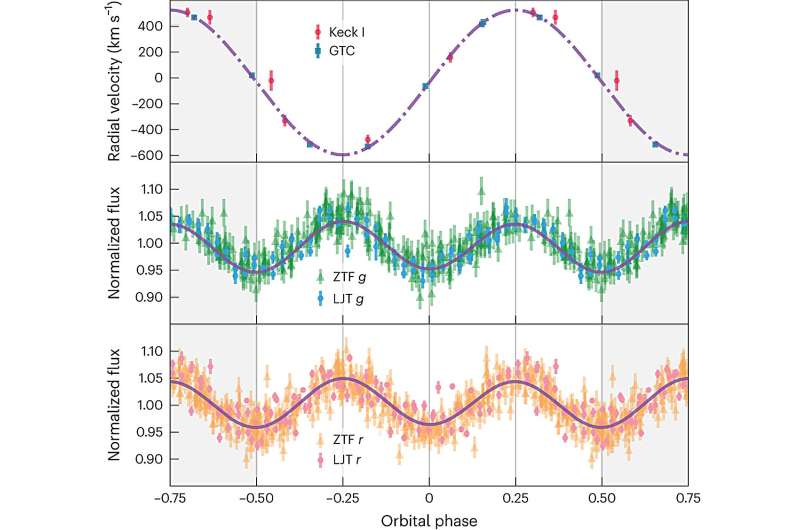February 21, 2024 report
This article has been reviewed according to Science X's editorial process and policies. Editors have highlighted the following attributes while ensuring the content's credibility:
fact-checked
peer-reviewed publication
trusted source
proofread
Smallest star ever observed is part of an exotic binary system

A large international team of astronomers has discovered the smallest known star to date, and found that it is paired with another, somewhat larger star. Their paper is published in the journal Nature Astronomy,.
Recent research has shown that hot subdwarfs are the smallest-known kinds of stars—they burn helium at their cores and are typically found in galactic stellar groups. Such research has overturned prior theories suggesting that red dwarfs are the smallest type of star.
In this new study, the researchers discovered the smallest hot subdwarf yet, a star that is part of a binary system known as J0526 and is located approximately 2,760 light years from Earth. The two stars are named J0526A, the larger unseen white dwarf; and J0526B, the hot subdwarf.
The smaller star is approximately seven times the size of Earth, which means it is smaller than Saturn. It also has a surface temperature of approximately 2,226°C. It orbits the larger star approximately every 20 minutes, the shortest known binary orbit. Due to its unique characteristics, the larger white dwarf cannot be seen—the researchers confirmed it was there, however, by noting deformations made to the orbit of the smaller star.
The finding of the binary system by the researchers confirms a theory developed by a Chinese team more than 20 years ago—their calculations showed it should be possible for small stars to exist in binary systems.
The J0526 system was first observed by research members working at the Tsinghua University-Ma Huateng Telescope for Survey, in China. Additional study of the system was done using data from other sites around the world with bigger telescopes, allowing for confirmation of the system, its star members and characteristics of both of them.
The discovery of J0526B challenges theories surrounding the size and nature of stars, suggesting that they can be smaller than has been thought and leading to speculation that there are stars that are even smaller—perhaps with unknown properties.
More information: Jie Lin et al, A seven-Earth-radius helium-burning star inside a 20.5-min detached binary, Nature Astronomy (2024). DOI: 10.1038/s41550-023-02188-2
Journal information: Nature Astronomy
© 2024 Science X Network





















